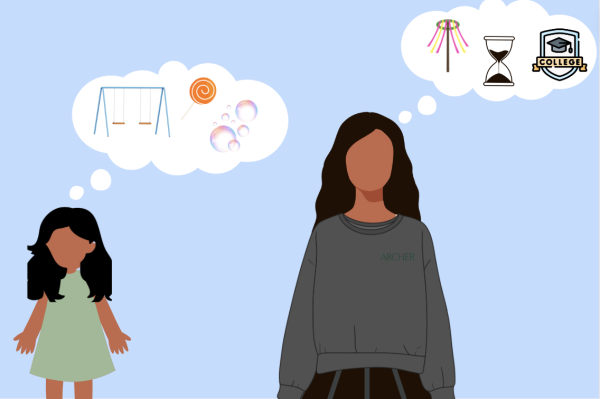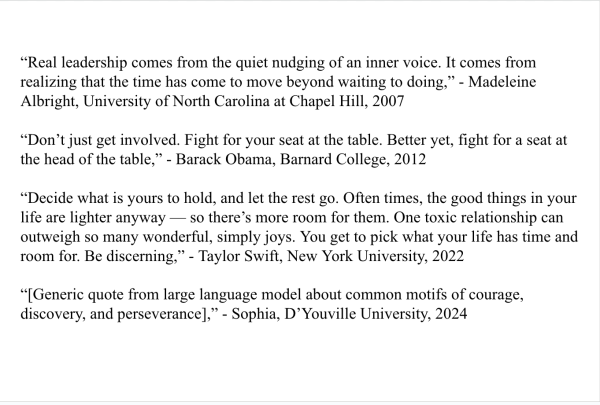Op-ed: Decline in bee population causes negative impacts

A bee pollinates a flower. With the bee population in decline, it is important that humans make an effort to save the important species. Image source: U.S. Department of Agriculture
Approximately one third of every bite of food that humans consume has been pollinated by a bee. Bees are the most effective pollinators on earth, but alarmingly populations have been decreasing rapidly. In 2015-2016, farmers saw a 44 percent decrease in the bee population, dropping 3.5 percent greater than previous years.
Scientists debate what is causing the termination of the bee population, but one thing is clear — only humans have the ability to save the bees.
One reason causing bees to die is the use of harmful insecticides in agriculture. Although this protects and preserves crops, the insecticides also harm the bee. Secondly, the the varroa mite pathogen is a disease that the varroa mite spreads by feeding on the blood of bees, killing the animal.
Another potential cause of the population decrease is habitat loss, which has been continually occurring for many years. Pollution, changing weather conditions and expansion of cities are damaging viable living spaces for bees. As these factors become more common, bees die more and more frequently.
Bees pollinate 95 kinds of fruits and nuts, including almonds, avocados, cranberries and apples. Humans are dependent on bees, yet government policy makers have not taken action in a way that acknowledges the severity of this issue. Without bees, Earth’s agriculture would suffer tremendously.
Biologist Claire Kremen, a professor at UC Berkeley, is dedicated to studying the effect that pollinators such as bees have on the environment. In her research she concluded that the more diverse the pollinators are, the more effective the pollination is; therefore the more produce is harvested. The bees contribute substantially to this diversity, and their loss would be devastating to crops.
It is critical that humans recognize the impact that the decline in bees will have on society. Not only will a third of fruits and nuts be unable to survive, but bee-dependent businesses such as the honey-industry would fail — causing people globally to lose their jobs.
Additionally, animals in the ecosystem that are dependent on bees would struggle as well. With a proper understanding of the issue, people can begin to fight to preserve the bees and help prevent a continuation in the decline of the bee population.
However, Archer can become involved in preserving the bee population. First students can create a community garden where various flowers and trees can be planted to would suit bee populations. Although Archer already has a garden, more flowers and trees should be planted that would suit bee populations. Bees thrive in warm environments filled with flowers such as honeysuckle, bottlebrush, lavender and berry plants.

Los Angeles provides a perfect environment and Archer already has a garden with the potential to become a bee haven. The garden will be a beautiful place on campus and at the same time, we will be promoting a healthy environment for the bees. We can later develop this into an off campus community garden spaces.
There are several existing programs that help fund school beehives. Whole Kids’ Honey Bee Grant Program has begun to fund schools across the United States. They offer $1,500 to schools to help them build a hive. Creating a hive would enable Archer girls to establish a community for bees to live in with the absence of disease, pesticides and habitat loss.
Teaming up with local beekeepers would enable the Archer girls and faculty to quantitatively measure the sample bee population. All Honey and Bee is a local Southern California beekeeper company. They assist people with bee infestation, but instead of terminating the bees, they relocate them. Their bee boxes contain 3000 – 5000 bees and can placed in the garden.
In a phone interview, Peter (who did not share his last name), a beekeeper from All Honey and Bee, said that people have recently become “very interested in [buying bees]”. He said that it is “becoming very popular to keep bees. [People] use them to pollinate their orange groves, lemon groves or whatever kind of crop they have. They are [also] doing it because they like the honey.” He is relieved to see people taking interest in bees and believes that creating a school hive would be beneficial.
If Archer were to take on this task, we could create a volunteer system where girls can earn community service credits for tending the garden and aiding in monthly bee counts to measure growth in the population.
Eventually, the data collected could be used on a municipal level and brought to local politicians to draw attention to the issue and encourage them to set up more healthy and habitable bee havens around Los Angeles. Part of the Archer community project can be volunteer to educate students at other schools about the depopulation of bees and how to create havens on campus for bees.
“Understanding the relationships between species diversity and ecosystem functioning is a key issue given the global decline in biodiversity,” wrote Kremen. Spreading awareness about bees as well as taking action would enable the Archer community to develop the understanding that Kremen values so highly — not only aiding Archer, but the planet.

Sara Weitz has been going to Archer since the sixth grade and joined the Oracle in 2016. She has run on the Archer cross country team for six years and...














